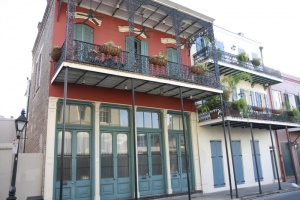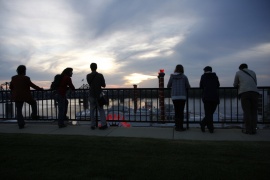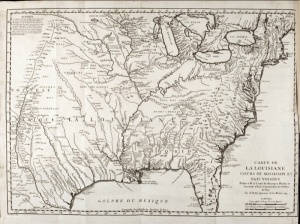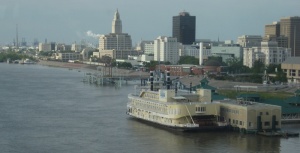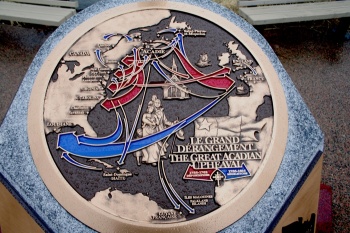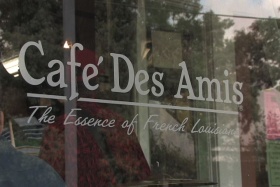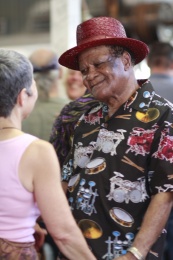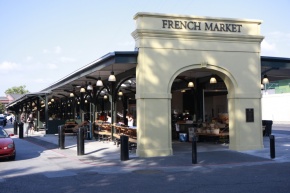A Quick History of French-Speakers in Louisiana (1682–1900)
par Piccinin, Helgi
Louisiana, a land of cultural mixing, was officially proclaimed a French territory and named in honour of King Louis XIV by explorer Cavelier de Lasalle in 1682. The territory subsequently changed hands several times—ceded to Spain in the Treaty of Paris in 1763, recovered by France in 1800, then, three years later, sold by Napoleon to the United States—but these shifts of allegiance did not lead to the disappearance of French in the area. They did, however, produce a specific cultural mélange due to successive migrations of Acadians, Creoles, American Indians, Spaniards and Europeans of diverse origins. Up until the early 20th century, francophone language and culture remained predominant. In this article, videographer Helgi Piccinin explores the characteristic mix of cultural influence and colours that continues to survive in francophone Louisiana.
Article disponible en français : Francophones en Louisiane: depuis quand? (1682 à 1900)
Cut the Music, Cue the History
Late in April of 2009, we were in our second week in Acadiana - in Lafayette to be precise - and the Festival International de Louisiane (LIEN) had just wrapped up. The members of our team of nomadic documentary filmmakers had felt right at home as part of this festive intercultural mosaic, but now we found ourselves alone in the heart of a deserted downtown, with only the festival tear-down crews for company. The musical storm was over, the subsequent quiet conducive to reflection. Our wonderful encounters and conversations with Louisiana artists had planted a seed in my mind. After my introduction to Louisiana cultural identity through music, there was only one thing I wanted to do-to learn more. The French language issue suddenly seemed a lot more complex than I had originally thought. Rather than leave Lafayette just as life was getting back to normal there, we decided to stay and delve a little bit deeper into French Louisiana. But where to start? I felt it was important to step back in time to untangle the threads of Louisiana history. There was something I needed to know, and it boiled down to one rather naïve question: How did such a large French-speaking community come to exist in the Southern United States? As always, the answer was neither as simple nor as straightforward as the question.
A Bit of History
None of us were historians. For the Quebeckers and French members of our group, this chapter in the history of the colonization of North America was a vague memory at best. How could we understand the present without knowing the past? We began our quest at the office of the Council for the Development of French in Louisiana (CODOFIL), which as its name indicates, works to protect and promote the French language in the state (see article 3) - quite a challenge in the overwhelmingly English environment of the U.S.A. CODOFIL executive director David Chéramie started the conversation by making sure we knew what was special about Louisiana history: "We were here even before the United States was founded. We didn't immigrate to their land, they immigrated to ours."
![]() FRENCH LANGUAGE VIDEO 1: David Chéramie Explaining How Louisiana's Existence Predates the Founding of the U.S.A.; 51 sec.
FRENCH LANGUAGE VIDEO 1: David Chéramie Explaining How Louisiana's Existence Predates the Founding of the U.S.A.; 51 sec.
Let us step back in time for a moment. In the 17th century, the Americas were divided into colonies ruled by the European powers of England, France, Spain and Portugal. From their perspective, anything that did not already belong to them was up for grabs and fair game. Even though Spanish explorers and French trappers had been roaming the Louisiana Territory (essentially the center of the present-day United States) since the 16th century, it was Cavelier de Lasalle who officially laid claim to it on April 9th, 1682, naming it Louisiana in honour of Louis the 14th, King of France. Times were hard for the new colony. Largely left to its own devices, it was frequently neglected by France-which had problems of its own in continental Europe. The colony's situation began to improve when a concession was granted to the Company of the West (later the Company of the Indies), which sold its shareholders on the idea of investing in Louisiana. In 1718, the city of New Orleans was founded as a trading post and soon, European settlers, missionaries and African slaves began to arrive in the colony.
In 1750, New France was a vast territory stretching from Northern Labrador to the Gulf of Mexico, with the Appalachian Mountains serving as a natural boundary with the 13 British colonies to the east and the Great Plains marking the territory's western limit. About 7,000 French immigrants(NOTE 1) came to Louisiana in the 18th century; that is one hundredth of the number of settlers living in the British colonies along the Atlantic Coast. How could such a wild and vast land be governed by so few? In fact, the territories "discovered" and "conquered" by the Europeans had long been inhabited by Native Americans. Although the French presence was proportionately much smaller than the British one, the powerful alliances between aboriginal tribes and French troops go a long way toward explaining this odd numerical and territorial imbalance.
Louisiana, "The End of the Line"
During our conversation, David Chéramie explained another interesting characteristic of the region. "Louisiana has always been a land of exile and refuge (...) There are even studies showing that even before the arrival of European settlers, Native American tribes would banish people they didn't want into exile in Louisiana." The territory certainly wasn't the destination of choice for French settlers, who preferred the West Indies or Canada. In the case of the slaves, choice didn't even enter into the equation. Fate also intervened for the Acadians, whose mass arrival was the result oftheir forced deportation from Canada at the hands of the British.
![]() FRENCH LANGUAGE VIDEO 2: David Chéramie on Louisiana, a Land of Exile, 2 min. 14 sec.
FRENCH LANGUAGE VIDEO 2: David Chéramie on Louisiana, a Land of Exile, 2 min. 14 sec.
The use of the place as a land of refuge - or for many exiles the "end of the line" - no doubt helped forge certain characteristics ofLouisiana's identity. The now cliché expression Laisse le bon temps rouler! [Let the good times roll] is reflective of the joie de vivre that I felt all throughout my trip. With those "good times" in mind, however, I feel compelled to add a word or two about Louisiana's challenging climate. The state's hot and humid weather, swamp lands and interwoven bayous and hurricane - prone location can make it a difficult place to live. Fortunately, access to the Mississippi, one of North America's great rivers, and to the ocean via the Gulf of Mexico have made Louisiana a strategic hub for exploration and trade.
The FlagsChange, but Louisiana Stays French
In hindsight, the second half of the 18th century and the start of the 19th seem like one long series of political ups and downs. After France's defeat in the Seven Years War [also known as the French and Indian War], Louisiana was ceded to Spain and Canada to Britain under the Treaty of Paris in 1763. This marked the end of France's colonial holdings in North America. Although Napoleon regained possession of Louisiana for a short period in 1800, he sold it three years later to the fledgling United States of America. Despite being shuffled from one power to another, Louisiana remained predominantly French speaking due to extensive immigration from France, Acadia and the French West Indies. When Louisiana officially joined the union as the 18th American state in 1812, it was the only one with a non-English-speaking majority - the Creole and Cajun communities.
Just Who are the Cajuns, White Creoles and Creoles of Colour?
Élaine Clément, CODOFIL's community out reach coordinator, explained the different kinds of French spoken in Louisiana to help me understand that there wasn't just one French language in Louisiana, but several. This linguistic diversity can be attributed to the diverse ethnic origins of the population. According to the 2000 census, 198,784 Louisiana residents age five and over identify themselves as French speakers, including 4,470 French Creole speakers.
![]() FRENCH LANGUAGE VIDEO 3: Élaine Clément: Different Forms of Spoken French and Distinct Cultural Identities; 1 min. 45 sec.
FRENCH LANGUAGE VIDEO 3: Élaine Clément: Different Forms of Spoken French and Distinct Cultural Identities; 1 min. 45 sec.
The Cajuns
The Cajuns are descended from the inhabitants of Acadia, the part of New France that today is known as the Canadian provinces of New Brunswick, Nova Scotia and Prince Edward Island. The large Acadian presence in Louisiana is the product of one of the darker chapters in Canadian history - the Great Upheaval [also known as the Acadian Deportation].
In 1755, British troops deported between 8,000 and 10,000 Acadians. Men, women and children were sent by boat to the Southern United States, France and England. Thousands eventually ended up in Louisiana, many of them arriving in 1785 (1,600 Acadian refugees that year alone). The Cajuns are the largest French-speaking group in Louisiana today. At one of the famous Saturday dances at Café des Amis in Pont Breaux, I met Floyd Leblanc, an elderly Acadian whose ancestors came from Nova Scotia. With a mix of pride and melancholy in his voice, he explained what a Cajun was: a French Catholic who likes to eat, dance and play cards. What he was really saying was that, historical origins aside, being "Cajun" was also a way of life.
![]() VIDEO 4: Floyd Joseph Leblanc on What it Means to be Cajun; 57 sec.
VIDEO 4: Floyd Joseph Leblanc on What it Means to be Cajun; 57 sec.
The White Creoles
The term "Creole" can be confusing. When I arrived in Louisiana, I tended to associate the word with people of colour. But to our surprise, when we asked Rocky McKeon to tell us about his Cajun origins, he corrected us, "I'm actually Creole (...) My ancestors came directly from France." And it's true, the French colonists who settled in Louisiana were known as French Creoles
![]() FRENCH LANGUAGE VIDEO 5: Rocky McKeon: I'm French Creole, not Cajun!; 1 min. 04 sec.
FRENCH LANGUAGE VIDEO 5: Rocky McKeon: I'm French Creole, not Cajun!; 1 min. 04 sec.
Over time, other French Creoles arrived from the French West Indies. In 1791, slaves revolted in Saint-Domingue (now Haiti). Slavery was abolished two years later in the wake of the French Revolution. Between 1789 and 1806, it is estimated that nearly 20,000 French colonists left Saint-Domingue for Louisiana. These new arrivals, who had a strong entrepreneurial streak, spurred a boom in U.S. cotton production, which went from 9% of the world total in 1791 to 70% by 1805.(NOTE 2)
The Creoles of Colour
Like many parts of the United States with plantation-based economies, Louisiana owed much of its development to a large influx of black slaves. Under the impetus of the Company of the Indies, some 6,000 African slaves were imported to the colony between 1719 and 1743. More followed, eitherwith their slave masters from Saint-Domingue or directly from Africa, until there was a large "coloured" population. Although French was not their first language, they rapidly adopted the then-dominant language. Today, Louisiana has one of the highest proportions of Black residents in the country (32% accordingto the 2006-2008 census).(NOTE 3) Their influence on the French language, music and Louisiana culture in general is considerable.
And the "Others"...
What fascinates me about Louisiana is that it's a genuine American melting pot, but with a French heritage. Far be it from me to want to rewrite history, but I can't help but see Louisiana as a glimpse of what North America might have been had it remained French. Actually, I should say French-speaking rather than French, since other Europeans came too-adding to and enriching the French-speaking majority, as did certain Native American nations. The Houma Nation is one eloquent example, with its heritage derived from both Native and French-speaking traditions. The truth is that Louisiana is a veritable multicultural gumbo. Cajuns, French Creoles, Creoles of Colour, Native Americans, Spaniards and other Europeans are the main ingredients in this colourful "stew", which as David Chéramie so aptly puts it, has added richness to the "great American tapestry."
![]() FRENCH LANGUAGE VIDEO 7: David Chéramie's Conception of a Multicultural and French-speaking America; 2min. 31 sec.
FRENCH LANGUAGE VIDEO 7: David Chéramie's Conception of a Multicultural and French-speaking America; 2min. 31 sec.
"One flag, one nation, one language. The 20th century was a long battle for the survival and preservation of Louisiana's French-speaking community. Between the time when French was banned from the schools and the moment it was reintroduced through second language and immersion programs, Louisiana's French-language heritage came close to vanishing forever. Let's take a closer look at this struggle." (Article 3)
HelgiPiccinin
VidéoEldorado
NOTES
Note 1: Havard G., Vidal C., Histoire de l'Amérique française, p. 205 (cited in Wikipédia: http://fr.wikipedia.org/wiki/Louisiane_(Nouvelle-France)#cite_note-9)
Note 2:http://fr.wikipedia.org/wiki/Histoire_de_la_culture_du_coton
Note 3:http://quickfacts.census.gov/qfd/states/22000.html
Additional DocumentsSome documents require an additional plugin to be consulted
Images
-
« Lumpy » l’autobus c
ollectif au déb... -
À 7h30 le samedi mati
n, il n’est jam... -
 Au Café Des Amis, il
Au Café Des Amis, il
y a plus de gen... -
Des membres de Vidéo
Eldorado admira...
-
Le French Market à la
Nouvelle-Orléa... -
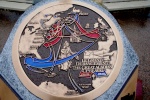 Monument dédiée à la
Monument dédiée à la
mémoire du Gran... -
Traversant le Mississ
ipi sur le pont... -
Un bateau accosté en
Nouvelle-Orléan...
Vidéos
-
 Cédric Watson: origines « mêlées » (59 sec)
Cédric Watson: origines « mêlées » (59 sec)
-
 David Chéramie explique l'existence de la Louisiane avant la fondation des É.-U. (51 sec)
David Chéramie explique l'existence de la Louisiane avant la fondation des É.-U. (51 sec)
-
 David Chéramie explique la Louisiane comme une terre d'exil, (2min 14sec)
David Chéramie explique la Louisiane comme une terre d'exil, (2min 14sec)
-
 David Chéramie: conception des É.-U. multiculturels et francophones (2min31sec)
David Chéramie: conception des É.-U. multiculturels et francophones (2min31sec)
-
 Élaine Clément: différents français parlés et différentes identités (1min 45sec)
Élaine Clément: différents français parlés et différentes identités (1min 45sec)
-
 Floyd Joseph Leblanc: Un Cadien, c'est quoi? (57sec)
Floyd Joseph Leblanc: Un Cadien, c'est quoi? (57sec)
-
 Rocky McKeon Créole, francophone et pas Cadien! (1min 04sec)
Rocky McKeon Créole, francophone et pas Cadien! (1min 04sec)

